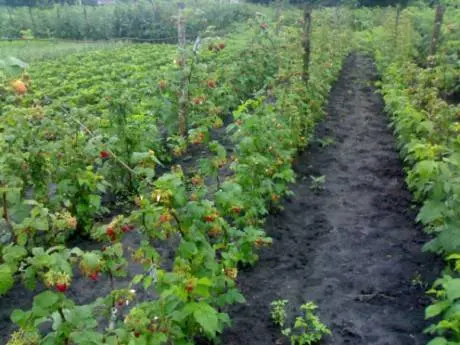Contents
The result of fruitful breeding work is a variety of modern raspberry varieties. Among them, raspberry Sunshine stands out, the description of the variety, photos and reviews of which testify to the wonderful taste of its fragrant berries.

Raspberry Sun successfully combined the best properties of the old variety “News Kuzmina” and Bulgarian – “Kostinbrodskaya”, on the basis of which it was bred – good winter hardiness, early ripeness, resistance to some fungal diseases.
Characteristic of the variety
Raspberry bushes Sunny form tall, straight shoots with a graceful curve of the top. Hung with brushes of ruby berries, they are used by many summer residents as a beautiful hedge. Raspberry stalks Sunshine are characterized by a slight thorniness and a noticeable wax coating, which prevents excessive evaporation of moisture. Young shoots are green in color, and as they grow, they acquire a brownish tint. Not related to remontant varieties, raspberry Solnyshko shows a fairly high yield – more than 80 kg / ha, and up to 1,5 kg can be harvested from one bush.
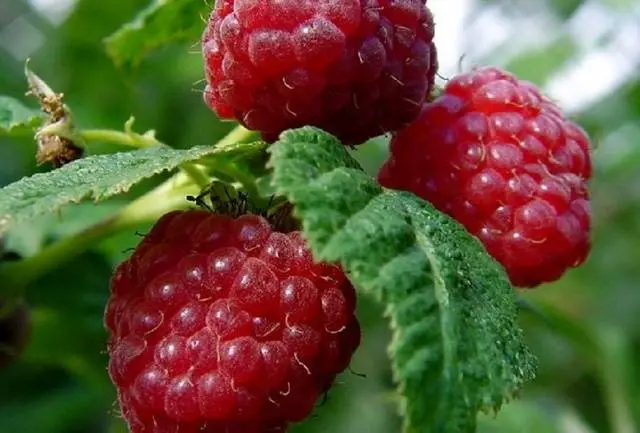
Description of the variety and reviews refer the raspberry Sun to the best dessert varieties. Its bright, juicy berries are distinguished by:
- delicate sweet and sour taste;
- rich berry aroma;
- round-conical shape;
- large sizes – their weight reaches 4,5 g;
- high content of ascorbic acid;
- versatility of purpose – berries can be consumed fresh, processed and frozen;
- good transportability.
Planting raspberries
Raspberry bushes have a shallow root system, which should be considered when choosing soil. They grow well on light loam. The soil in the top layer should be quite fertile, with a weak acidity index. To reduce it, you can preliminarily lime the soil.

Planting dates
Shrubs can be planted at any time during the growing season. But the preferred planting dates for the Sunshine raspberry variety depend on the climatic conditions of the region. For southern regions with a long, warm autumn, the best time for planting a berry plant will be the second half of September or the beginning of October. Raspberry seedlings Solnyshko will have time to take root before the start of frost and will begin to grow together in the spring. Spring plantings are risky, since this time in the south is usually short and dry, and the buds on raspberry bushes will bloom before the root system has time to develop. Therefore, young seedlings can simply die.
In colder climates, raspberry bushes planted in autumn may freeze to death. Therefore, it is better to transfer the planting to a long spring with high humidity. Before the onset of heat, the raspberry bushes Sunshine will have time to take root. Land for spring planting is best prepared in the fall. You can fertilize it naturally by sowing green manure. Before frost, they will have time to sprout, and during the winter they will overheat and, under the influence of soil microflora, will turn into an excellent organic fertilizer for raspberries. At the same time, you can prepare compost from fallen leaves, plant and food residues.

Site Selection
Reviews for raspberry Sunshine are advised to choose a landing site in the southern part of the site – open to sunlight and protected from cold winds. The light level of the bushes can be increased by placing rows of raspberries in a north-south direction. The more sunlight the berries receive, the tastier they will be. To obtain good yields, raspberries should be provided with a thick snow cover in winter. You should not plant Sunshine raspberries in areas where potatoes or strawberries were grown, as they are characterized by the same diseases. But it grows well after currants and chokeberries.
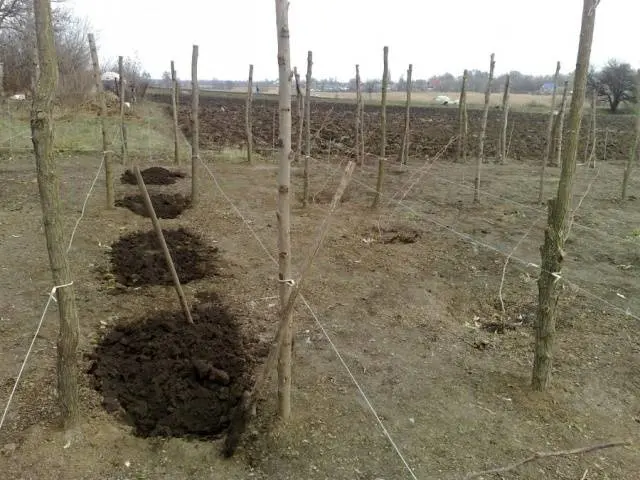
Pit method of landing
Holes for planting raspberries of the Sun variety should be prepared 2-3 weeks in advance, adhering to the following recommendations:
- the distance between the holes should be at least 1 m, and the row spacing should be up to 2 m;
- the bottom of the holes must be laid out with a nutrient mixture of rotted manure and superphosphate;
- mix it with garden soil and a little ash.
Adding too much ash can increase the alkalinity of the soil, which is just as bad for plants as acidity. When planting, the root neck should not be too deep, otherwise the bush may die. Raspberries should be planted in such a way that after compaction of the soil, its root collar is on the same level with the surface of the earth.
trench method
Many gardeners prefer to plant Sunshine raspberry bushes in trenches. Although the trench method is more laborious, it has its advantages:
- plantings are more evenly provided with nutrients;
- raspberry care is facilitated – watering, weeding between rows, mulching;
- increases the yield of bushes.

About 2-3 weeks before planting raspberries, the site is cleared of weeds and marked with a cord. The width of the trench is usually up to 0,5 m, and the length corresponds to the size of the site. At the ends of the trench, strong supports are fixed, between which a wire is pulled to tie the stems.
Raspberry Care
After planting the bushes, they are abundantly watered and mulched with sawdust or straw. In the future, caring for raspberries Sunshine, according to the description of the variety, consists in the timely organization of watering, fertilizing, pruning.
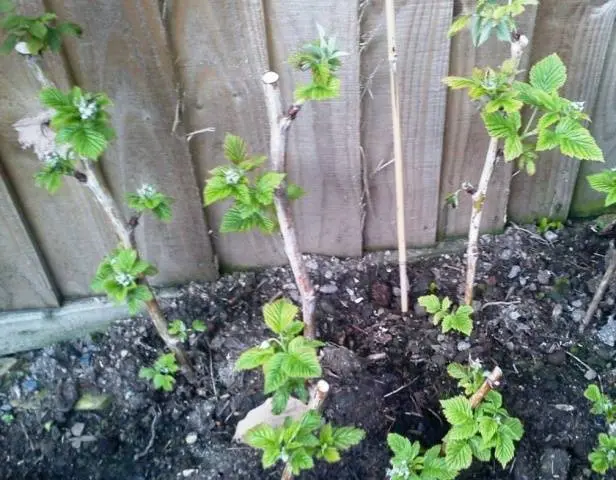
Carrying out pruning
Raspberries grow very quickly and fill the free space around them, so regular pruning is necessary. It allows for the growth of stronger shoots. At the beginning of spring, sanitary pruning of raspberries of the Sun variety is carried out, which consists of:
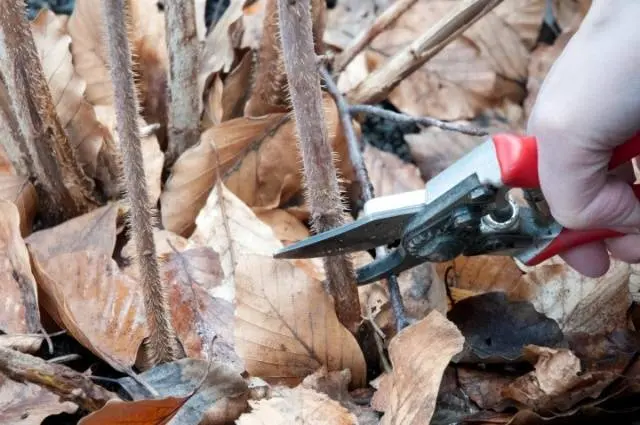
- in the removal of dried and broken shoots;
- freeing the bush from diseased and weak branches;
- pruning healthy stems to the first bud.
Pruning raspberries is also designed to regulate the degree of thickening of the bushes. Too many extra shoots only harm the plants, as it reduces the level of illumination of the raspberry and the content of nutrients. Therefore, at the beginning of summer, when the raspberry bushes grow a little, a second pruning is carried out, during which up to 10 healthy shoots remain on each. All weak branches are removed. Extra stems should not be dug up – you can damage the roots, they just need to be carefully cut at the base.
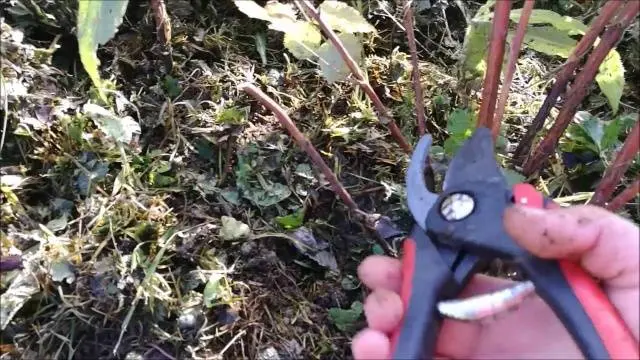
After harvesting, the third pruning procedure is carried out, during which the fruited and damaged raspberry shoots are removed.
Organization watering
Reviews show that the raspberry variety Sunshine reacts to a lack of moisture with a noticeable decrease in yield, since its root system is located very close to the surface of the earth. However, excess moisture is also detrimental to bushes:
- berries will lose their aroma and taste;
- the roots will begin to rot;
- raspberries will fall off before ripening;
- the degree of hardening will decrease, which is fraught with freezing bushes in winter.
The frequency and intensity of the irrigation procedure depends on local climatic conditions. Most of all, raspberry Sunshine needs abundant watering at the initial stage of formation and ripening of berries. Usually this period falls on the end of May – the beginning of June. The most convenient way is to organize drip irrigation of raspberries or regular watering into prepared grooves. Furrow irrigation has the advantage that water does not fall on the crown of the bushes. After it, you need to loosen the soil around the plants, while simultaneously clearing it of weeds. However, loosening should be shallow, otherwise raspberry roots that are close to the surface of the earth can be damaged.
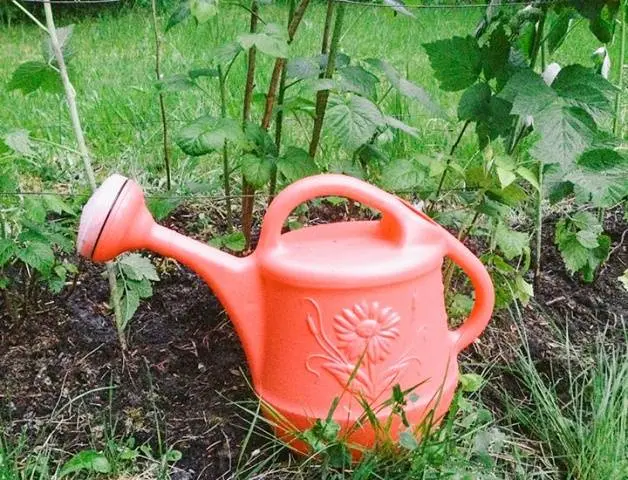
At the end of summer, after harvesting, watering the raspberry sun can be stopped. However, in dry years, it must be continued until October to allow the raspberries to prepare for wintering.
Nutritious top dressing
As follows from the description, Sunshine raspberry can produce good yields in the same area for up to 10-15 years if it is regularly fed with organic and mineral fertilizers. When examining the bushes, experienced gardeners, even by their appearance, can determine which microelements are missing for their nutrition:
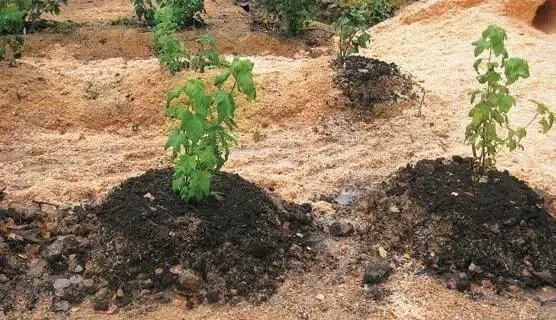
- phosphorus deficiency will result in weak, thinned raspberry shoots;
- yellowing leaves indicate a lack of iron or magnesium;
- with a lack of nitrogen, the leaves become smaller and turn yellow, and with an excess of nitrogen, the raspberry bush grows rapidly;
- brown, as if charred, leaves on raspberries indicate a potassium deficiency, which is fraught with the danger of winter freezing of the bushes.
After spring pruning, the first dressing of raspberries of the Sun variety is carried out. To do this, you can prepare a mixture of nitrogen-phosphorus fertilizers, mullein and wood ash, which is rich in potassium. During the summer, raspberries consume a large amount of nutrients for development and fruiting. To maintain the yield for the next year, it must be fed before wintering. Autumn fertilizing with organic matter has a good effect on the condition of the Sunshine raspberry bushes and their productivity. It can be carried out with rotted manure or compost prepared from fallen leaves and plant residues. Liquid chicken manure gives a good effect.

Pest Control
Of the insect pests, berry bushes most often infect the raspberry beetle, weevil or spider mite. Digging the soil around the raspberry bushes, destroying last year’s foliage, and treating it with drugs helps in the fight against them. An effective remedy against aphids will be spraying the bushes of the Sun variety with a soapy solution of dry mustard after the appearance of buds.
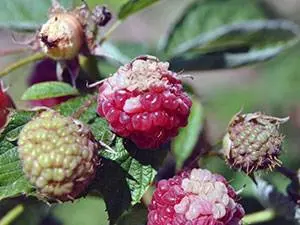
The appearance of orange tubercles on raspberry leaves indicates fungal diseases, against which spraying with special preparations will help. Spring treatment of bushes with Bordeaux liquid will prevent the appearance of powdery mildew and anthracnose.
Description of the variety and reviews on raspberries Sunshine is recommended as effective preventive measures against diseases:
- timely destruction of diseased and damaged branches, fallen leaves;
- planting green manure plants between rows of raspberries;
- proper care – watering and top dressing.
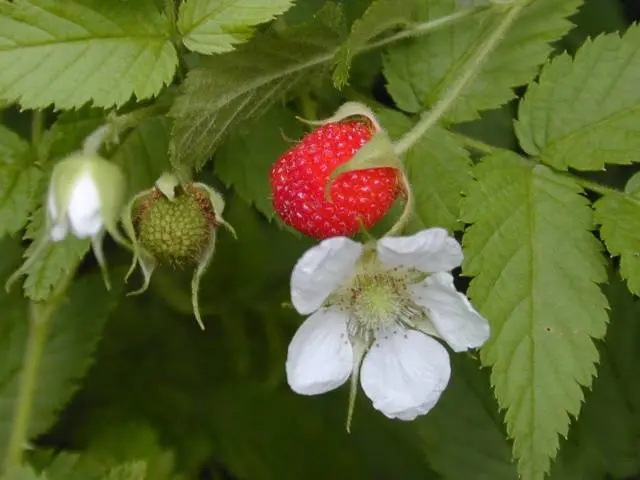
Reviews of summer residents
Conclusion
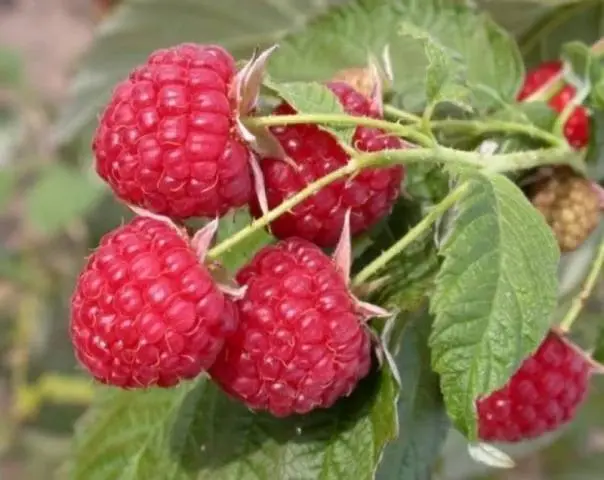
Subject to the simple rules of agricultural technology, the raspberry variety Sunshine will delight for many years with high yields of fragrant, tasty berries.










